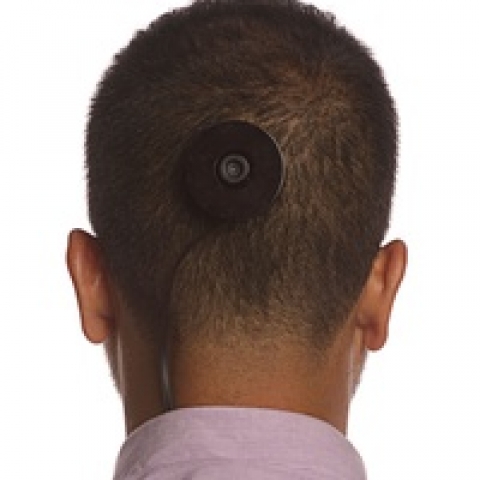An app that allows users to instantaneously upload media from handheld devices to the Internet, Myi builds on the use of ubiquitous photography in modern technology as a key motivator and mode of communication for activism and information. As witnessed during recent movements in the Middle East, the Arab Spring became possible, in part, because people could send images or video directly to any server. While the primary media/news distribution models are often filtered, censored, and biased, the citizen's voice arrived unedited and built through mass participation and raw exposure.
The Myi project was developed by Wafaa Bilal and Shawn Lawson. The app enables users to stream images from their android or iPhone mobile device to a central server, their Flikr page, and/or personal website. The photographs are automatically taken at a continuous rate of the user's discretion. The Myi website is the central server where images can be experienced as the collaborative-collective stream. The simple, yet dynamic site, will place images in accordance to their time and position. Additionally, users can categorize their images by keywords of their choosing, similar to a hashtag option.
The new version of the app will replace flickr with our own server and database. We will attempt to integrate an authentication technology for the app, and use that authentication to connect to our database. Uploading of images and metadata will be done using the JSON format. The new app will also have the option for choosing the delay length between picture captures. The new website will allow visitors to search images by keywords (tags).
We are in the process of finding both a back-end and front-end website and database developers.
About the artist

Iraqi-born artist Wafaa Bilal, an Assistant Arts Professor at New York University's Tisch School of the Arts, is known internationally for his on-line performative and interactive works provoking dialogue about international politics and internal dynamics. For his current project, the 3rdi, Bilal had a camera surgically implanted on the back of his head to spontaneously transmit images to the web 24 hours a day – a statement on surveillance, the mundane and the things we leave behind. Bilal's 2010 work "…And Counting" similarly used his own body as a medium. His back was tattooed with a map of Iraq and dots representing Iraqi and US casualties – the Iraqis in invisible ink seen only under a black light. Bilal's 2007 installation, Domestic Tension, also addressed the Iraq war. Bilal spent a month in a Chicago gallery with a paintball gun that people could shoot at him over the internet. The Chicago Tribune called it "one of the sharpest works of political art to be seen in a long time" and named him 2008 Artist of the Year. Bilal's work is constantly informed by the experience of fleeing his homeland and existing simultaneously in two worlds – his home in the "comfort zone" of the U.S. and his consciousness of the "conflict zone" in Iraq. Bilal suffered repression under Saddam Hussein's regime and fled Iraq in 1991 during the first Gulf War. After two years in refugee camps in Kuwait and Saudi Arabia, he came to the U.S. where he graduated from the University of New Mexico and then obtained an MFA at the School of the Art Institute of Chicago. In 2008 City Lights published "Shoot an Iraqi: Art, Life and Resistance Under the Gun," about Bilal's life and the Domestic Tension project.
